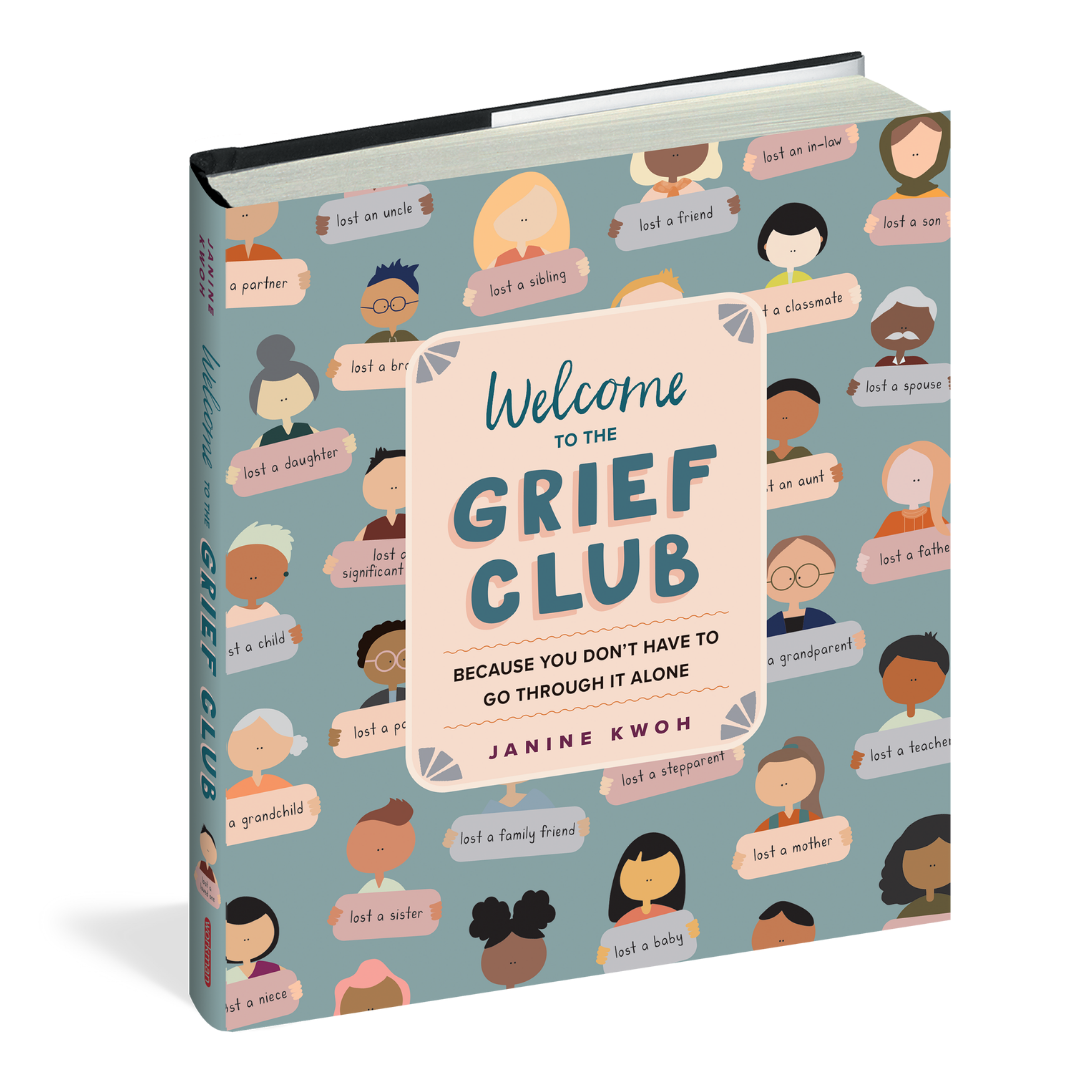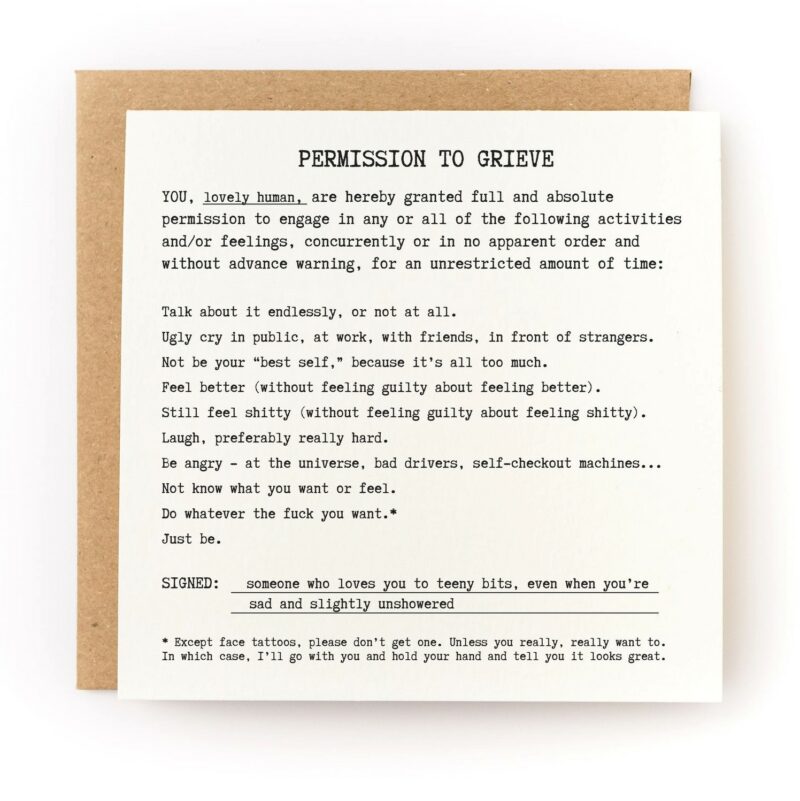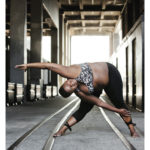From the author of Welcome to the Grief Club. Copyright © 2021 by Janine Kwoh.
In 2016, my partner, Nap, died unexpectedly when we were both twenty-eight. He was the first person I loved who died, and I was one of only a few people I knew my age who had experienced a significant loss.
Before he died, if you had asked me what it would be like to lose someone you love, I would have said that it must be a terribly hard and sad experience. Nothing could have prepared me for just how devastating, all-encompassing, and complicated grief actually is. I couldn’t have imagined the depths of despair or the breadth of emotions I felt. I was sad, and then angry, guilty, numb, confused, anxious, and joyful—in quick succession, in dizzying combinations, and seemingly all at once. It felt like I couldn’t possibly hold all of these emotions inside me, and yet they didn’t have anywhere else to go.
I started writing in the weeks after his death. It felt like there was both too much and nothing left to say, but I tried writing because my therapist said it would help me process my feelings, and I didn’t know what else to do. I wrote down some of the things about him I was afraid of eventually forgetting, and whatever I was feeling in the moment. I wrote because the world moved on so quickly after he died, and I felt invisible in my grief. I thought that at least if I wrote it down and could see the words on the page, I could bear witness for myself.
As a greeting-card maker, I turned to writing sympathy cards. It felt more familiar and somehow easier for me to write about my life as a series of cards rather than keep a journal. The first card I wrote was “Permission to Grieve”:
When I shared the sympathy cards I was writing, so many people responded saying that the cards helped put into words what they were feeling, or were what they needed to hear. It was the first time I realized that so many of the things I was doing and feeling that seemed strange or unique to me were actually more common than I knew. It was like there was a secret club full of people like me that I didn’t even know existed until I was in it. I had initially started writing about grief as a way to better connect with myself, but it ended up being a way to connect with others.
In 2019 I started writing an illustrated book on grief, Welcome to the Grief Club. I didn’t want to write a how-to guide on grief or retell my personal story of loss; rather, I wanted to talk about all of the surprising, confusing, brutal, funny, and downright bizarre parts of grief that so many of us experience but that we don’t often talk about. I wrote and drew about a lot of my own struggles and questions: Is this as big of a deal as it feels? Is this jumble of emotions that I’m feeling “normal”? Am I even grieving correctly? Am I ever going to feel differently than I do now? (Spoiler alert: It is, and you are.)
On one hand, the act of writing it all down has been healing and cathartic, almost like the book is an external piece of my heart that is helping me hold some of my grief. As I shared parts of the book while I was writing it, hearing from others who related to what I was saying was, in turn, both validating and comforting.
It’s been almost six years since Nap died, and somewhere along the way I think I prematurely stopped processing his death and my grief. Creating this book not only prompted me to reflect back on my earliest acute stage of grief, but also to examine how it’s changed over time and the aspects of grief I’m still experiencing now: questioning the validity of my grief (e.g. Am I too sad? Am I not sad enough?); managing anxiety and hypervigilance (e.g. immediately imagining the worst-case scenario when people don’t text me back); and recognizing that it’s OK for new joys and loves to live alongside my grief.
On the other hand, creating—and talking about—the book has been really difficult and more re-traumatizing than I expected. It has been emotionally hard to think about, interrogate, and create a book about the worst thing that ever happened to me, day in and day out, and in the middle of a pandemic that has caused so much loss and isolation. I feel like I reopened a wound that had partially healed over, and then kept it open so that every day I could poke around to see what else there was inside that I could excavate. Many days, I am overwhelmed by my own and others’ losses. Like anything to do with grief, writing this book has been a messy and multi-faceted experience.
Creating Welcome to the Grief Club is my biggest and most personal creative endeavor to date. I feel both exhausted and renewed after creating it and from connecting with other “grief club” members through it. I am really proud of what’s in the book, and also so incredibly sad that it exists. Writing it made me feel less lonely in my grief, and my hope is that reading it does the same for others. I hope it is one more voice that says I see you and you are not alone, from one grieving person to another.
More About Welcome to the Grief Club
 Welcome to the club that no one ever wants to join but so many of us end up needing. We’re so sorry that you’re here.
Welcome to the club that no one ever wants to join but so many of us end up needing. We’re so sorry that you’re here.
Based on her own experience with grief— the author’s partner died when both were in their late twenties—and those of other Grief Club members, Janine Kwoh uses brief writings, illustrations, and creative diagrams to explore the wide range of emotions and experiences that grief can encompass. For anyone who has lost a loved one or who is close to someone who is grieving, Welcome to the Grief Club is a book of solace, connection, hope, and reassurance. It addresses with empathy and honesty the aspects of grief that so many of us experience but that aren’t widely discussed: the variety and volatility of emotions—sadness, anger, guilt, joy; the physical symptoms of grief; and how grief isn’t linear, but it does change and soften over time. It affirms that there is truly no right or wrong way to grieve and assures us that the things we feel that surprise us or seem strange are often common and always valid.
Humor helps us to survive, and the book uses a lighthearted approach to cover powerful topics, like supremely unhelpful things that people say to those who are grieving, grief trigger bingo, and everyday acts of resilience. This book is a companion that says, I see you and you are not alone, from one grieving person to another. It is a gentle reminder to give yourself permission to grieve for as long as—and in whichever ways—you need.
Buy the Book
Amazon | B&N | Bookshop | Workman






No Comments